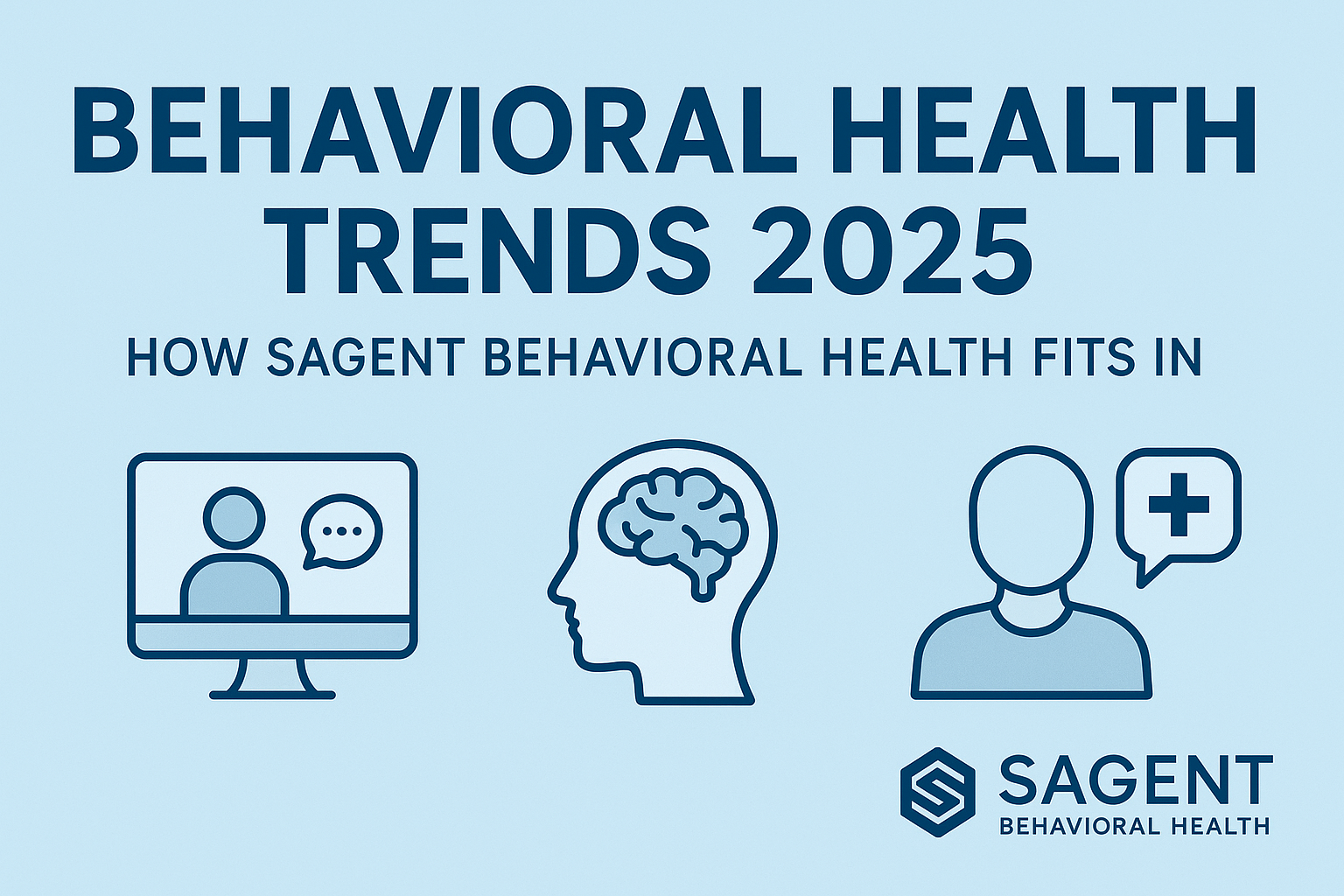7 Key Trends in U.S. Behavioral Health in 2025 & How Sagent Behavioral Health Fits In
The U.S. behavioral health landscape is evolving faster than ever. Rising awareness of mental well-being, new digital tools, and integrated care models are reshaping how Americans access therapy and psychiatric care. In this changing environment, Sagent Behavioral Health is emerging as a key player—uniting multiple leading regional brands under one name and creating a nationwide network of accessible, compassionate behavioral health services.
In this blog, we’ll explore seven major trends shaping behavioral health in 2025 and how Sagent Behavioral Health aligns with these transformations.
1. Expansion of Telehealth and Virtual Therapy
The pandemic accelerated telehealth adoption, and in 2025 it remains a cornerstone of behavioral care. Virtual therapy sessions make it easier for patients in rural and urban areas alike to connect with licensed professionals from home.
Sagent Behavioral Health has integrated advanced telehealth platforms, ensuring seamless access to therapy, psychiatry, and medication management—bridging the gap for clients who prefer remote care.
Keywords: telehealth behavioral health, virtual therapy USA, Sagent Behavioral Health telehealth
2. Focus on Integrated Physical and Mental Health Care
A growing body of research shows the link between physical and mental health. Clinics are now offering integrated care models—combining behavioral health with primary care to treat the whole person.
Sagent Behavioral Health embraces this approach, collaborating with medical professionals to ensure patients receive comprehensive, coordinated care that addresses both mental and physical wellness.
Keywords: integrated care behavioral health, mind-body wellness, Sagent Behavioral Health integrated model
3. Rise in Youth and Adolescent Mental Health Services
An alarming increase in anxiety, depression, and social stress among youth has pushed the need for specialized adolescent behavioral care.
Sagent Behavioral Health is responding with dedicated child and adolescent programs, combining therapy, family counseling, and evidence-based interventions to support young people’s mental health in schools and communities.
Keywords: youth mental health trends 2025, adolescent therapy programs, Sagent Behavioral Health youth care
4. Increasing Use of Technology and Data-Driven Insights
AI, data analytics, and digital tracking tools are helping therapists personalize treatment plans. In 2025, the behavioral health sector continues to adopt technology for progress tracking, medication management, and real-time assessments.
Sagent Behavioral Health uses data-driven tools to enhance patient outcomes, streamline care coordination, and provide measurable progress updates to both patients and clinicians.
Keywords: behavioral health technology, AI in therapy, data-driven mental health, Sagent Behavioral Health innovation
5. Growing Emphasis on Accessibility and Affordability
Behavioral health has historically been difficult to access due to cost, insurance limits, and stigma. Now, leading networks like Sagent Behavioral Health are expanding services to more regions, offering in-person and online sessions that are affordable and insurance-friendly.
By uniting more than 1,600 clinicians under one brand, Sagent improves efficiency and access—helping thousands of Americans find care without barriers.
Keywords: affordable mental health care USA, behavioral health access, Sagent Behavioral Health locations
6. Focus on Clinician Support and Workforce Expansion
The shortage of licensed behavioral health professionals has become a national concern. Providers are now focusing on training, retention, and clinician well-being to sustain care quality.
Sagent Behavioral Health stands out by supporting its extensive clinician network through ongoing professional development, flexible scheduling, and strong community collaboration—ensuring both provider and patient satisfaction.
7. Emphasis on Holistic and Preventive Mental Health
Prevention-focused care—such as mindfulness, stress management, and early intervention—is replacing crisis-based models.
Sagent Behavioral Health incorporates holistic and preventive strategies, promoting wellness before conditions worsen. Its services go beyond therapy to include mindfulness-based programs, lifestyle coaching, and integrative approaches to emotional resilience.
Conclusion
The year 2025 marks a new era for behavioral health in the U.S.—where technology, accessibility, and integration redefine how we understand and manage mental wellness.
With its innovative approach, Sagent Behavioral Health is at the forefront of this transformation—empowering individuals and families through accessible, data-driven, and compassionate mental health care.
If you’re exploring modern, patient-centered behavioral care, Sagent Behavioral Health represents the future of mental wellness—uniting care, compassion, and technology to create lasting change.

